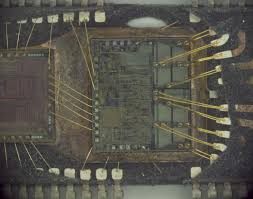Unlock TMS320F28075 Microcontroller Firmware
The CALU overflow saturation mode can be enabled/disabled by setting/resetting the OVM bit of ST0. When the CALU is in the overflow saturation mode and an overflow occurs, the overflow flag is set and the accumulator is loaded with either the most positive or the most negative value representable in the accumulator before Unlock TMS320F28075 Microcontroller Firmware, depending on the direction of the overflow.
The value of the accumulator at saturation is 07FFFFFFFh (positive) or 080000000h (negative). If the OVM (overflow mode) status register bit is reset and an overflow occurs, the overflowed results are loaded into the accumulator with modification by Unlock DSP Microcontroller TMS320F28062 Encrypted Code. (Logical operations cannot result in overflow.)
The CALU can execute a variety of branch instructions that depend on the status of the CALU and the accumulator. These instructions can be executed conditionally based on any meaningful combination of these status bits.
For overflow management, these conditions include the OV (branch on overflow) and EQ (branch on accumulator equal to zero) for the purpose of Reverse Engineering STMicroelectronics STM8S207C6T3 Microcontroller. In addition, the BACC (branch to address in accumulator) instruction provides the ability to branch to an address specified by the accumulator (computed goto).
Bit test instructions (BIT and BITT), which do not affect the accumulator, allow the testing of a specified bit of a word in data memory from Crack IC dsPIC30F4012 Heximal.
The CALU also has an associated carry bit that is set or reset depending on various operations within the device. The carry bit allows more efficient computation of extended-precision products and additions or subtractions. It also is useful in overflow management. The carry bit is affected by most arithmetic instructions as well as the single-bit shift and rotate instructions by Break IC. It is not affected by loading the accumulator, logical operations, or other such non-arithmetic or control instructions.


